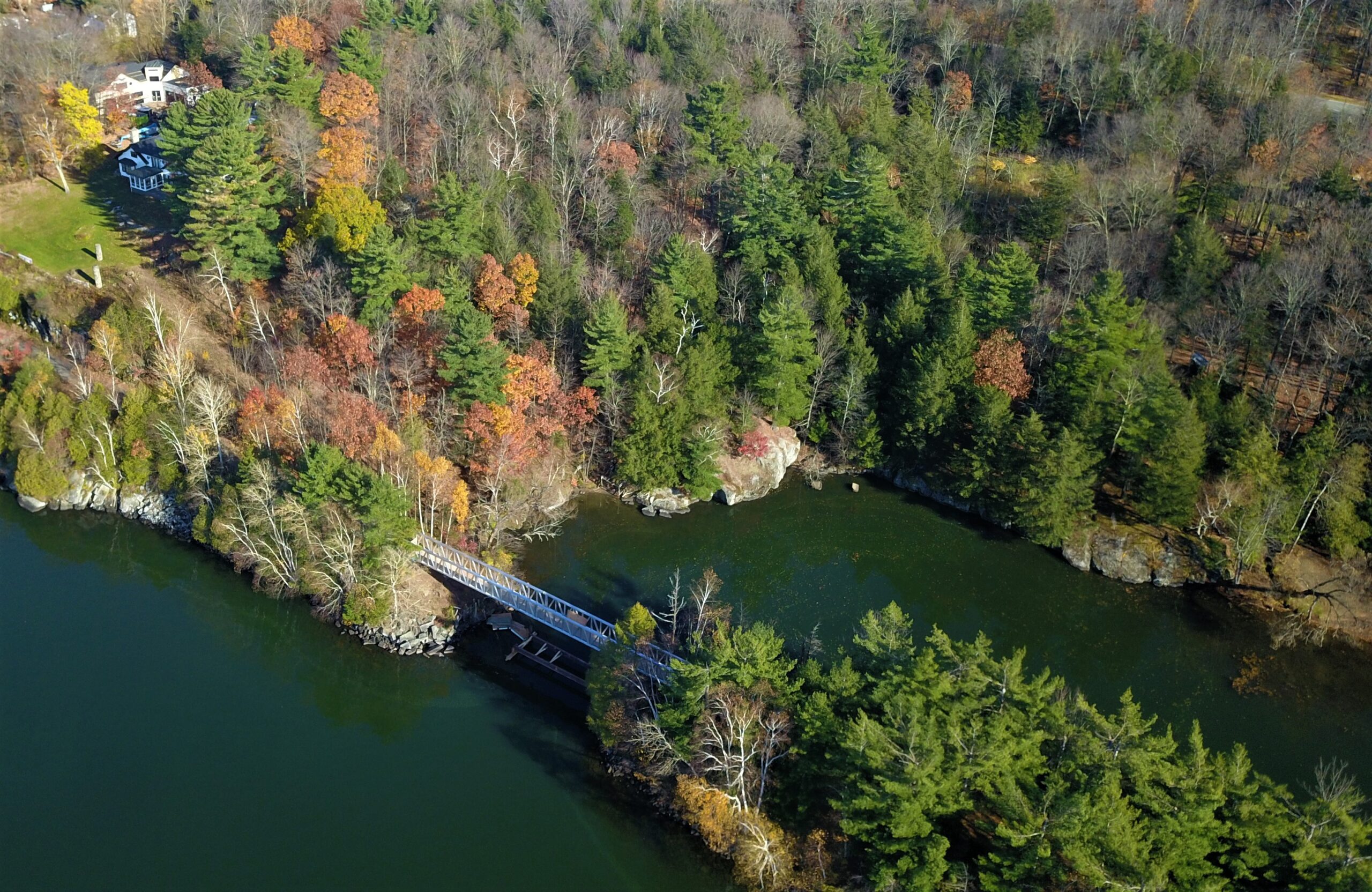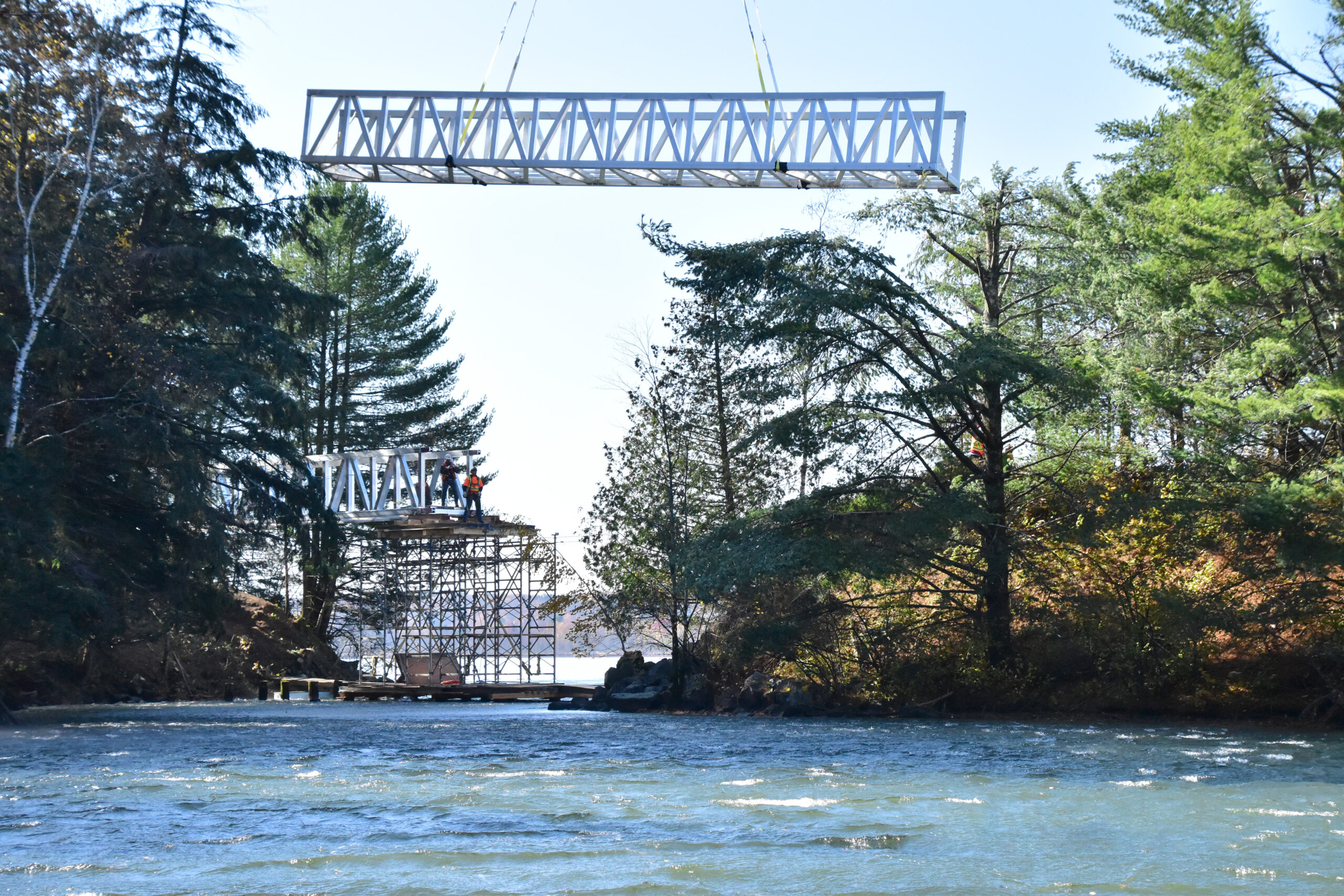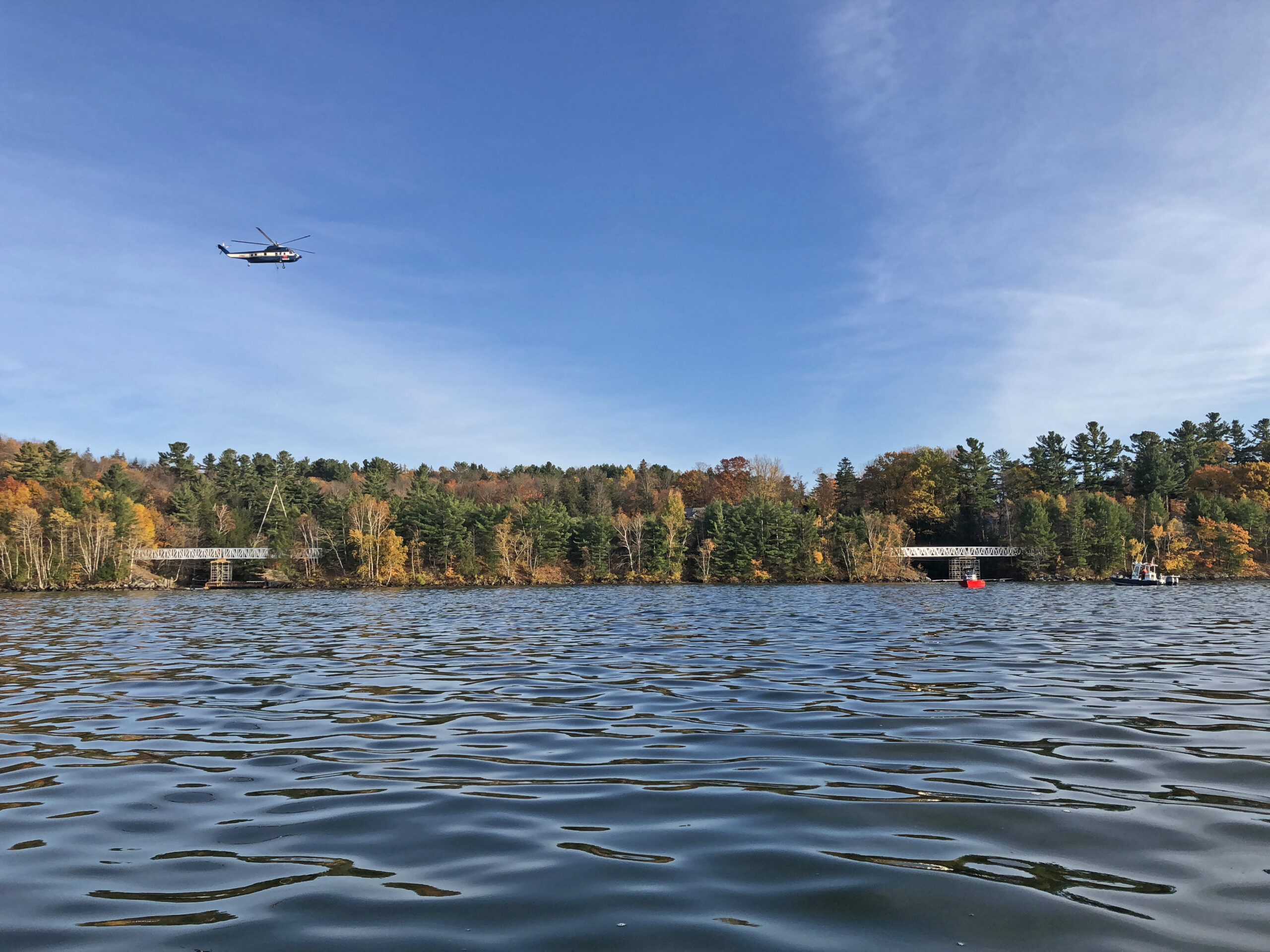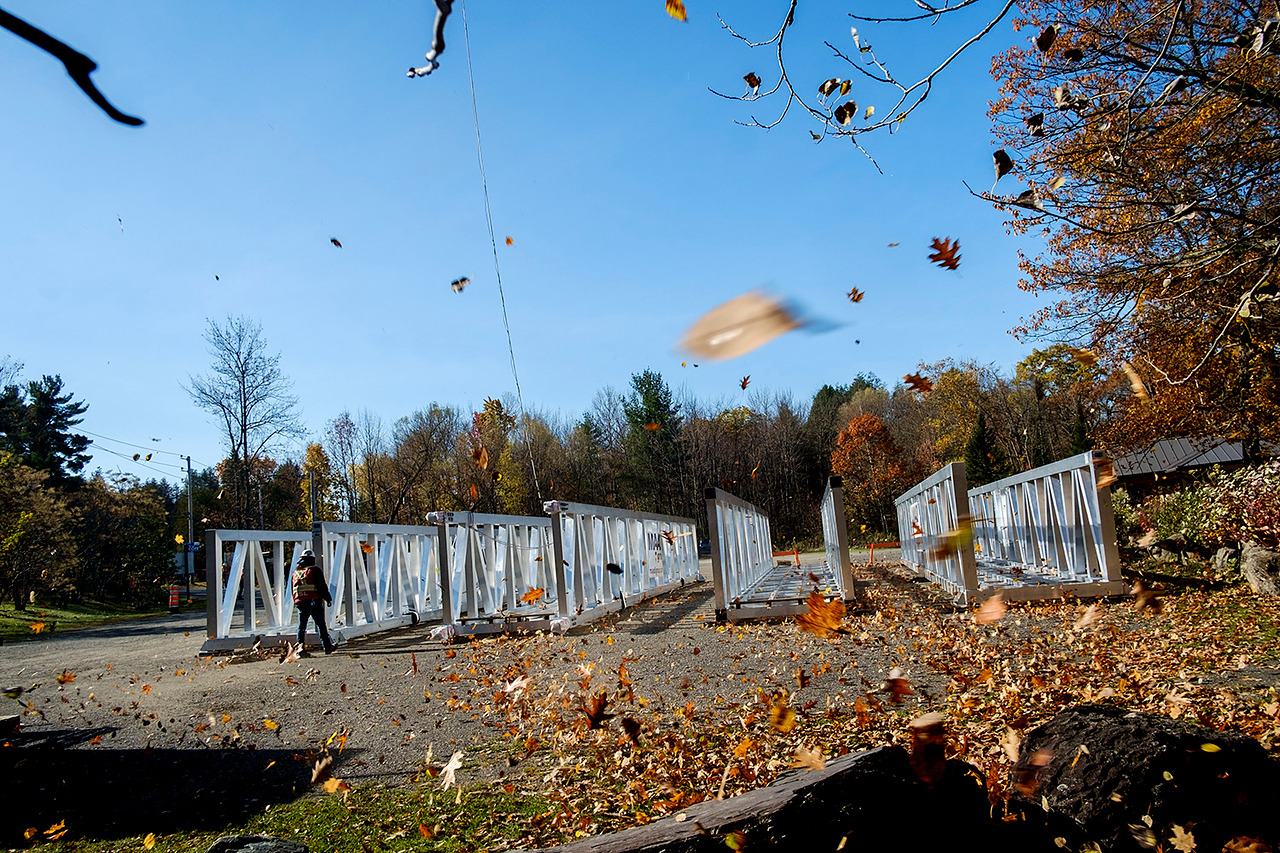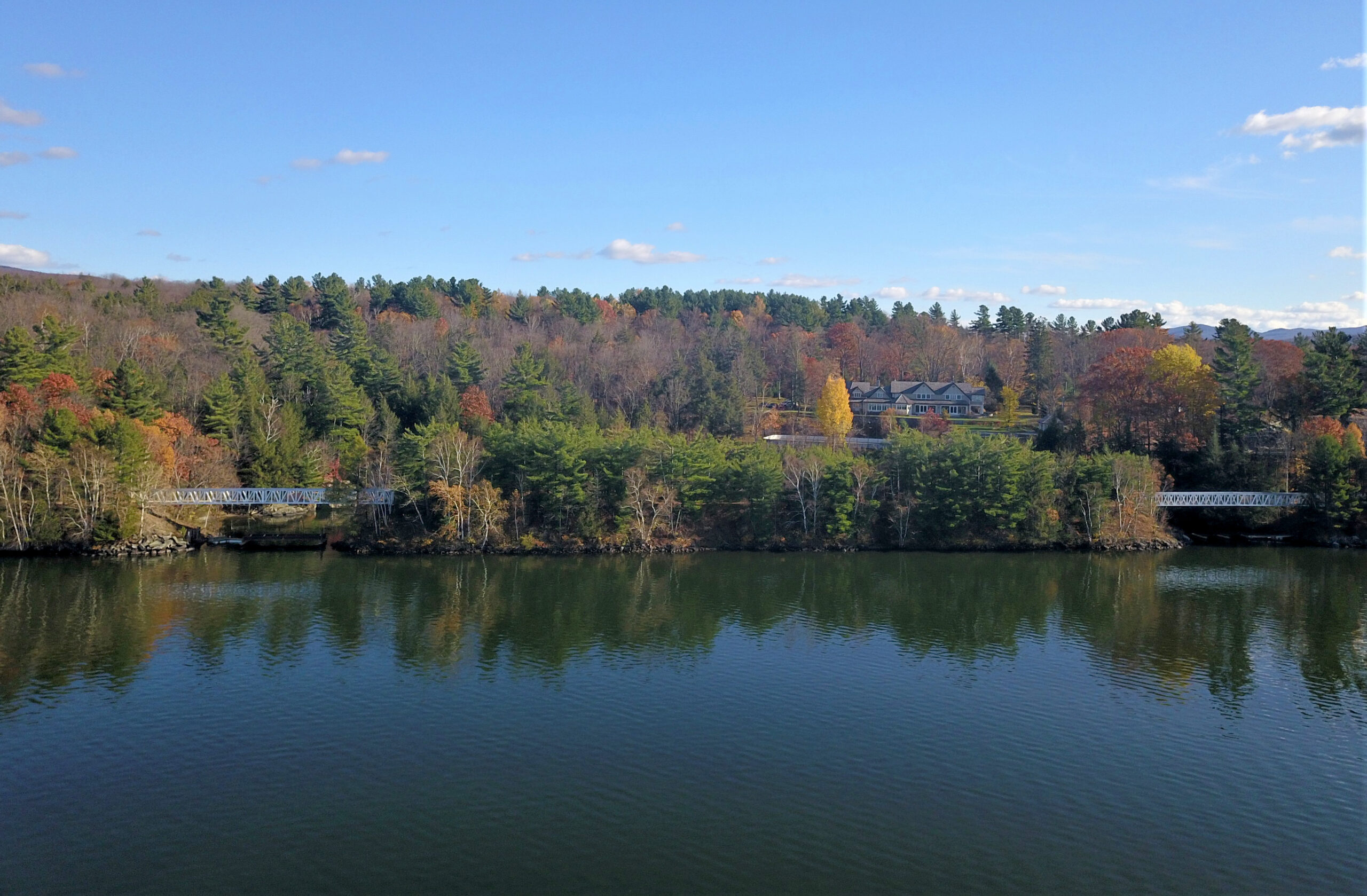Trestle Bridges Reborn: MAADI Group Delivers Aluminum Pedestrian Bridges to Brome Lake
November 18, 2019 – Brome Lake, Quebec, Canada — After nearly two decades of planning and debate, the scenic Quilliams Trail in Brome Lake is now fully connected—thanks to the installation of two cutting-edge aluminum pedestrian bridges designed and built by MAADI Group. These new bridges restore access to a historic railway corridor and demonstrate the long-term advantages of aluminum in pedestrian infrastructure.
A Historic Rail Path Revived with Modern Engineering
From Steel Rails to Sustainable Trails
During the golden era of train travel, Canadian Pacific constructed a rail line stretching from Foster, Quebec, to the U.S., skirting the serene waters of Brome Lake, southeast of Montreal. To avoid a sharp bend in the railroad, a 656 ft (200 m) wooden trestle bridge was built over a bay. Over time, ice destroyed the structure, prompting the railway company to replace it with an island embankment and shorter trestles at both ends. But by the 1960s, rail service ceased and the trestles were demolished in the early 1980s.
The former railway bed remained—and became a popular local trail—but without bridges, its appeal and continuity were limited.
A New Era with Aluminum Pedestrian Bridges
MAADI Group Selected to Deliver a Durable, Safe Solution
After years of advocacy and discussion, the Town of Brome Lake awarded a contract worth $874,655 (plus taxes) to general contractor BSL. MAADI Group Inc., a Quebec-based specialist in aluminum pedestrian bridges, was chosen to design and build two 130-foot (40 m) Warren pony truss bridges in the Trestle Cove area.
“MAADI Group engineers lightweight bridges and they’re pros,” said retired engineer Neil McCubbin, a local advocate for the project.
Accessibility, Safety, and Scenic Enjoyment
“Foremost in our minds was the security of the bridges’ users,” noted Alexandre de la Chevrotière, IWE, P. Eng., CEO of MAADI Group.
The new aluminum bridges now serve pedestrians, cyclists, wheelchairs, and even golf carts—allowing safe, inclusive access to the stunning lake views.
Engineered to Meet the Highest Canadian Standards
MAADI Group’s bridges were designed in compliance with:
-
Canadian Bridge Code CSA S6-14 (2014)
-
CSA S157-05 (R2010) Aluminum Design Code
-
Wind pressure compliance: 8.4 psf (400 Pa) for a 50-year return period
Structural load specifications include:
-
Distributed live load: 77 psf (3.67 kPa)
-
Concentrated load: 0.4 kips (1.6 kN)
-
Rail uniform load: 0.9 kips/ft (1.20 kN/m)
Expert Fabrication and Corrosion-Resistant Finishes
Certified Aluminum Welding and Durable Components
The bridges were built by CSA-certified aluminum welders, adhering to:
-
CSA W47.2-11 (Division 1)
-
CSA W59.2-18
They used GMAW welding techniques, aluminum alloy 6061, and 5356 filler. Decking is made of 6005A-T6 extruded planks, coated with anti-skid Sandtex polyester powder, and compliant with AAMA 2604-10 & ASTM D3359.
The railings and kickplates are anodized aluminum with a clear finish (AA-M12C22A41, Class 1), attached with stainless steel rivets for longevity.
Assembly in a Remote, Logistically Challenging Environment
Due to limited site access and a ban on crane lifting, the bridges—each weighing 24,000 lb (10,886 kg)—were divided into two sections. Helicopters with a 10,000 lb limit were used to transport each part. Installation on helical piles was completed in just one day.
Expansion-Ready Anchors and ISO 9001 Quality
Mobile bridge anchors were included to accommodate thermal expansion up to 5.9 inches (150 mm). All work was completed under MAADI Group’s ISO 9001:2015 quality management system.
Connecting Communities Through Trail Infrastructure
The two new aluminum pedestrian bridges are a gateway to adventure, part of the Quilliams Trail system and the larger Route Verte—a 5,000 km cycling network spanning Quebec.
With a clear width of 71 inches (1.8 m) and a clear height of 51 inches (1.38 m), the bridges offer accessibility for all users while towering 16 feet (5.5 m) above the water, providing stunning views of Brome Lake.
A Boost for Tourism and the Local Economy
An editorial in Tempo, Brome Lake’s local newspaper, called the bridges a “critical piece of the puzzle.” Not only do they complete a long-awaited trail loop, but they’re also expected to increase visitor traffic—helping local businesses thrive by drawing in hikers, cyclists, and families seeking nature and heritage experiences.
From Historic Rails to Modern Trails—A Legacy Reinvented
With the reestablishment of the original rail route in the form of recreational pathways, residents and tourists alike can now relive a piece of Quebec’s railway history—this time on foot or bicycle, over bridges engineered for the future.
“Today’s travelers—whether from near or far—can enjoy an active lifestyle and a meaningful connection to local history,” said McCubbin.

